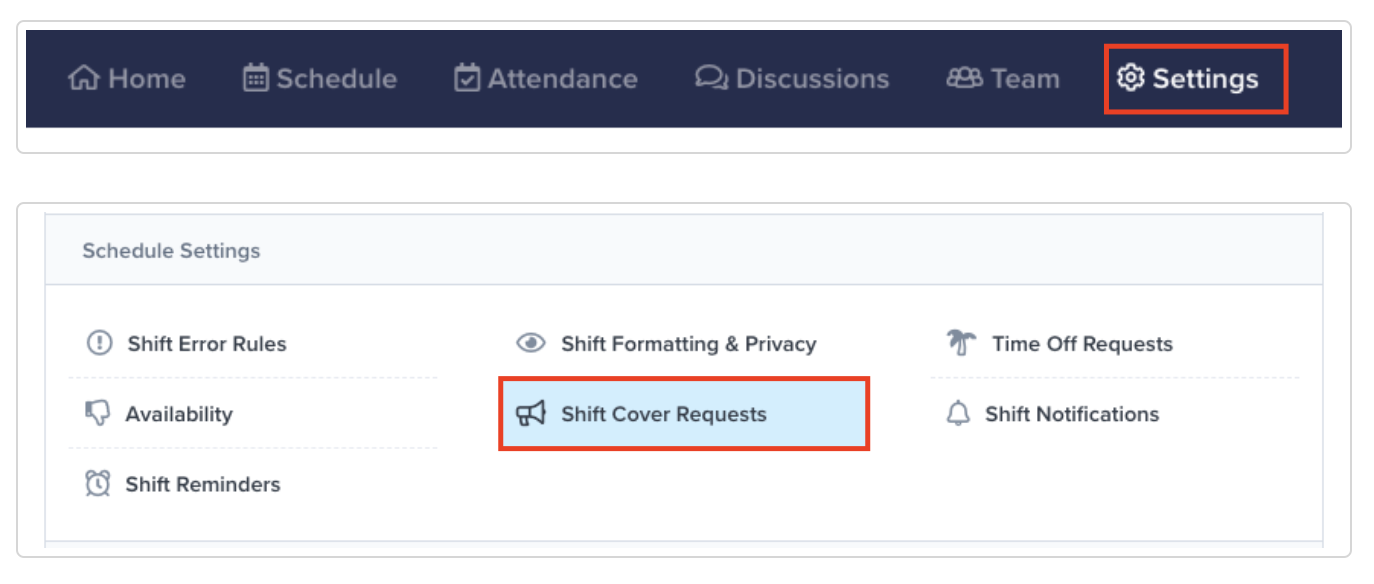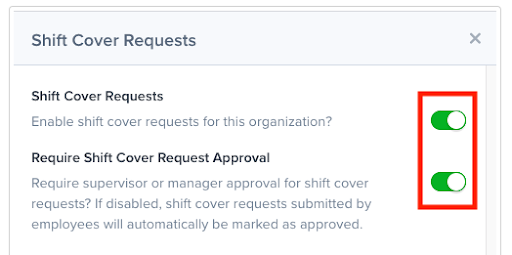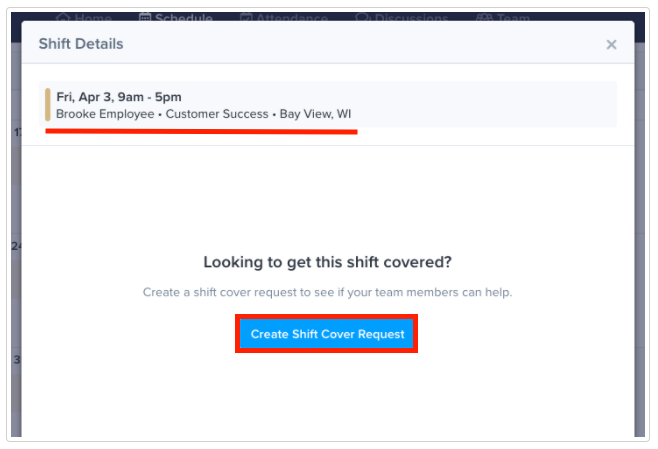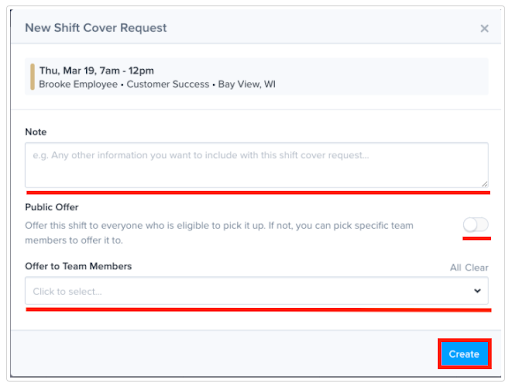How To Let Your Employees Swap Shifts Without Confusion

Even with great planning and foresight, it’s inevitable that employees will occasionally have unexpected events that make them unable to work their scheduled shift.
Employee schedule swaps and shift changes have to be one of the most frustrating items for managers. Updated schedules penciled in or needing to be remembered by those swapping and by management may not have even been aware of the change can cause issues. Obviously, this created problems for both employees and management and also for your customers, who expect a full, attentive staff for their experience.
What Is Shift Swapping?
Shift swapping is when two employees exchange their scheduled work shifts. This usually happens with the consent of both employees involved along with the manager’s approval.
There are multiple reasons for shift swapping, from emergencies to personal commitments to just a preference to work a particular shift.
For instance, consider this:
Employee A is scheduled to work on Wednesday but has a personal commitment that day. Meanwhile, Employee B, who is free on Wednesday and willing to work, has the day off. In this case, these two employees could effectively swap their shifts.
Why Should your Business Allow Shift Swapping?
It’s hard enough for managers to create a schedule that adheres to everyone’s availability and preferences, and still adequately covers each shift. What’s even more time consuming is handling the endless barrage of shift swap requests, no shows, and sick calls. To get control of your time, let your staff swap shifts or find replacements on their own.
If some employees have considerably higher wages than others, it may be wise to still require final manager approval for show swap requests so that you can make an informed decision regarding labor costs.
These days, there are many ways to curb confusion and avoid frustration by allowing employees to swap shifts. To make it easy for your employees to communicate with each other and with you about the latest changes to the schedule. Ideally, your employees will be able to easily get help when they need it, and everyone will know about shift changes with plenty of time to spare.
Here are some ways to make sure you’re never left wondering who’s covering whose schedule when employees swap shifts.
Step 1 – Define a clear process
Setting a procedure for swapping schedules and training employees can eliminate many headaches.
First, be sure all of your employees are crystal clear about the proper process for switching shifts.
Identify the best practices that you’d like them to use, and clearly outline all of the steps involved, from updating their profile and schedule on a software program (if you use one), to sending texts or calling the people involved in the switch (including management). Having one simple, standard process in place and making sure that this process is communicated to every single employee as a part of their training means that everyone is clear about expectations around changing the schedule.
You may even consider putting a reminder of the process into any paperwork or training materials that you provide to employees on their first day on the job.
A standard process for employee schedule swaps along with software can improve business scheduling.
Step 2 – Keep lines of communication open
Encouraging open lines of communication between employees and management not only builds trust and rapport but also helps you better manage schedules so you can minimize shift-swapping.
Sometimes agreed-upon availability changes because of an employee’s home life or other circumstances out of their control. While it can be challenging to manage the changing needs of many employees at once, it’s critical that your staff feel comfortable coming to you with these developments so you can effectively manage the overall schedule.
While it won’t always be possible to accommodate shift swap requests, keeping communication open and creating an environment that encourages openness with management will help ensure that you’re managing the most crucial shift changes and also respecting your employees’ needs – resulting in a happier team.
Step 3 – Leverage technology
In many cases, technology can offer a simple, streamlined solution to scheduling woes.
If you don’t have a tech stack in place, opt for employee scheduling software like ZoomShift. Take advantage of the features like Shift Swap, which notifies qualified employees as soon shifts open up. This allows available employees to fill open spots immediately and allows you and the rest of your staff to rest easy knowing all shifts are covered. Using software like ZoomShift, employees can swap shifts with someone mutually without the intervention of managers.
The centralized location tracking and notifications built into the work schedule app mean that no one will be left scrambling and that you’ll always know who’s working which shift.
Many software programs also have a feature like the discussion board, which allows a more open conversation between all employees about schedules, swaps, time off and other information. Bulletin boards can also be used to facilitate a collaborative scheduling process, turning what used to be a conversation between individual employees and managers into a more productive and open discussion amongst the whole team.
4. Encourage collaboration
As your employees get to know your culture and processes, it’s important to foster a culture of collaboration. When every employee on your team believes that they are working toward a common goal, they’ll take pride in their work and live up to the standards set by you and by the team. No one wants to let their team down, so not only will employees stick to their word when volunteering for an available shift – they’ll also be more likely to offer help in the first place. Instead of having management oversee and verify shift changes, you’ll be developing a self-sufficient team who looks out for each others’ best interests and keeps operations running smoothly.
Of course, the best way to curb confusion around shift swaps is to minimize them in the first place. Having open, honest conversations about your employee’s needs, and encouraging them to come to you with their concerns will mean fewer shift changes among your employees. And when the odd change does occur, the tips above will help you avoid any confusion.
Cons of Not Letting Your Employees Swap Shifts
Here are four reasons why not letting your employees swap shifts is a bad idea:
1. Reduced flexibility for employees. Without the ability to swap shifts, your workers will struggle to manage their personal responsibilities alongside their work obligations. The result is increased stress and reduced job satisfaction.
2. Difficulty in responding to unexpected events or emergencies. When employees are unable to exchange shifts, they can’t compensate for each other’s absences. This results in operational disruptions.
3. Decreased morale. A rigid scheduling system contributes to a negative atmosphere within the workplace. Employees feel undervalued and less engaged in their work, which affects overall morale and productivity.
4. Inflexibility can lead to turnover. Workers todah prioritize flexibility. A lack of shift-swapping options could lead to higher turnover rates as employees leave in search of more accommodating work environments.
How to Set up Shift Swapping in ZoomShift
ZoomShift empowers your staff to own their schedule and find replacements when necessary. To set up shift swapping in ZoomShift, start by enabling it in the settings menu:
Click Settings in the navigation bar at the top of your screen and click Shift Cover Requests under Schedule Settings.

Toggle the Shift Cover Requests option to green to enable shift cover requests for the entire organization. That will give your employees the greatest freedom to swap shifts independently and bypass manager approval by marking them approved automatically. To enable shift cover requests but still require final manual approval from management, toggle the second option that says Require Shift Cover Request Approval.

Now that shift cover requests are enabled, you can create one from the Home or Schedule screen by clicking on the shift you want covered.

The shift options box will pop up, and you’ll see New Shift Cover as an option at the bottom of the screen.

Once clicked, you’ll want to confirm your shift details at the top, then click Create Shift Cover Request in blue.

Next up, you can add any pertinent notes for the shift cover request into the Notes box, like why you need the shift covered or important details about the shift.
Toggle whether it’s a Public Offer, meaning anyone eligible can pick it up.
Select Offer to Team Members if you have specific teammates you’d like to send a shift cover request to.
Click Create to finalize your selection and send it out.

The shift cover request will show as Pending if management has the Require Shift Cover Request Approval setting enabled. If that setting is disabled, anyone can immediately pick up the shift.
Employees can swap shifts on the web app or the mobile app. To learn more about shift swapping, check out our knowledge base.
Are you ready to leverage the power of ZoomShift to help your employee’s swap schedules?
Smart business owners are freeing up their time by using employee scheduling software and time clock software. To streamline your employee scheduling start your free trial and get started for free.
Shift Swapping Frequently Asked Questions (FAQs)
What Is Shift Swapping?
Shift swapping is when two employees exchange their scheduled work shifts with each other.
Can Employees Swap Shifts With Anyone or Are There Restrictions?
Employees can swap shifts with anyone who is eligible to work that shift, meaning they have the necessary skills and do not exceed any working hour limitations.
What Are Some Potential Issues With Shift Swapping?
Shift swapping can lead to confusion and miscommunication if not properly managed. It’s important to have clear guidelines and procedures in place to prevent any misunderstandings.
What Are the Benefits of Allowing Employees to Swap Shifts?
Allowing employees to swap shifts offers several benefits including increased flexibility, improved work-life balance, and increased job satisfaction.
How Can I Set up a Successful Shift-Swapping System?
To set up a successful shift-swapping system, have a clear shift swapping policy in place, use a reliable scheduling platform like ZoomShift, and ensure all employees are trained on how to use it.
JD enjoys teaching people how to use ZoomShift to save time spent on scheduling. He’s curious, likes learning new things everyday and playing the guitar (although it’s a work in progress).



